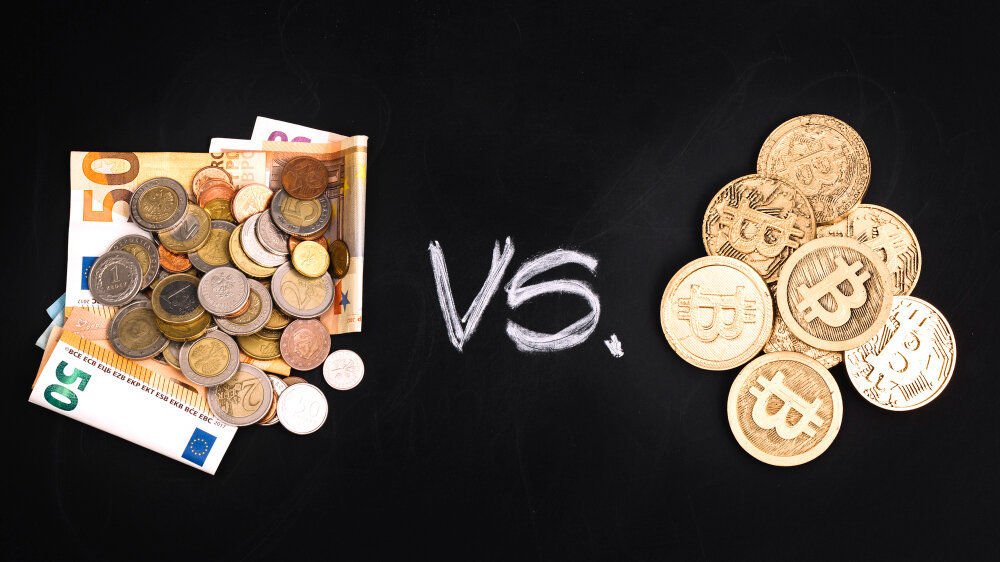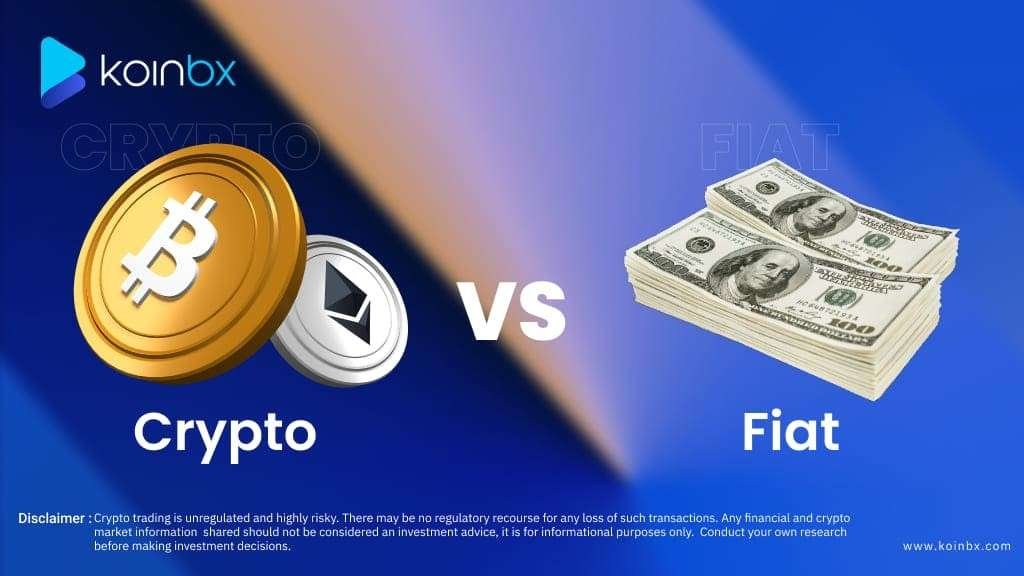Ever wondered how Bitcoin stacks up against the dollars in your wallet? Cryptocurrency and traditional money both serve as ways to pay for things, but they work in very different ways. This guide breaks down the key differences in simple terms, so even if you’re new to crypto, you’ll understand what sets these two apart and why it matters.
What is Traditional Money?
Traditional money, also called fiat money, is the cash and coins you use every day, like dollars, euros, or yen. It’s issued and controlled by governments and central banks, such as the Federal Reserve in the U.S. You can hold it in your hand, store it in a bank, or use it digitally through credit cards or apps like PayPal.
Traditional money is backed by the trust in a government’s economy and is widely accepted for buying goods, paying taxes, or settling debts.

What is Cryptocurrency?
Cryptocurrency is digital money that exists only online, like Bitcoin or Ethereum. Unlike traditional money, it’s not controlled by any government or bank. Instead, it relies on a technology called blockchain—a secure, decentralized digital ledger that records all transactions across many computers.
Cryptocurrencies use cryptography to ensure transactions are safe and can’t be faked. They’re often used for online payments, investments, or even powering new technologies like digital art (NFTs).

Key Differences Between Cryptocurrency and Traditional Money
Let’s compare cryptocurrency and traditional money across several key areas to see how they differ.
1. Control and Centralization
Traditional Money: Controlled by central banks and governments. They decide how much money to print, set interest rates, and regulate its use. This centralized control can stabilize economies but may lead to inflation or restrictions.
Cryptocurrency: Decentralized, meaning no single authority controls it. The blockchain network, run by thousands of computers worldwide, verifies transactions. This reduces reliance on banks but can make regulation tricky.
2. Physical vs. Digital
Traditional Money: Exists in both physical forms (cash, coins) and digital forms (bank accounts, online payments). You can withdraw cash from an ATM or swipe a card.
Cryptocurrency: Purely digital. You can’t hold a Bitcoin in your hand—it exists as code on the blockchain. You store it in a digital wallet, accessed via a phone or computer.

3. Transaction Process
Traditional Money: Transactions go through banks or payment processors (like Visa). For example, sending money overseas might take days and involve fees. Banks act as middlemen, ensuring trust.
Cryptocurrency: Transactions are direct, peer-to-peer, and recorded on the blockchain. They’re often faster (minutes instead of days) and cheaper for international transfers, but fees can vary depending on network demand.
4. Security
Traditional Money: Relies on banks’ security systems, like encryption and fraud detection. If your card is stolen, banks can often reverse fraudulent charges.
Cryptocurrency: Uses cryptography and blockchain to secure transactions. It’s highly secure, but if you lose your private key (like a password), your funds are gone. There’s no bank to call for help.
5. Value and Stability
Traditional Money: Relatively stable, though inflation can reduce its value over time. Its worth is tied to government policies and economic conditions.
Cryptocurrency: Highly volatile. Bitcoin’s price can swing thousands of dollars in a day. Its value depends on market demand, not government backing, making it riskier but potentially rewarding.
Benefits of Cryptocurrency Over Traditional Money
Cryptocurrencies offer unique advantages that make them appealing:
- Global Access: Anyone with an internet connection can use crypto, even without a bank account.
- Lower Fees: International transfers often cost less than bank wires.
- Transparency: Blockchain transactions are public, building trust.
- Innovation: Cryptocurrencies power new technologies like smart contracts and decentralized apps.

Challenges of Cryptocurrency Compared to Traditional Money
Despite its benefits, cryptocurrency has some drawbacks:
- Volatility: Prices can be a rollercoaster, making crypto risky for everyday use.
- Learning Curve: Understanding wallets, keys, and blockchain can be confusing for beginners.
- Limited Acceptance: Not all stores accept crypto, unlike cash or cards.
- Regulation: Governments are still figuring out how to regulate crypto, creating uncertainty.
Real-World Uses: Crypto vs. Cash
Traditional Money: Perfect for daily purchases like groceries, bills, or coffee. It’s widely accepted and easy to use, with established systems like ATMs and online banking.
Cryptocurrency: Growing in use for online purchases, international transfers, and investments. Some businesses accept Bitcoin, and crypto powers digital platforms like NFT marketplaces or decentralized finance (DeFi) apps.
Which is Better for You?
Choosing between cryptocurrency and traditional money depends on your needs:
- If you value stability and convenience, traditional money is likely your go-to for everyday spending.
- If you’re interested in innovation, global transactions, or investing, cryptocurrency offers exciting possibilities, but it comes with risks.
Many people use both: traditional money for daily life and crypto for specific purposes like investing or online purchases.
Conclusion
Cryptocurrency and traditional money each have their strengths and weaknesses. Traditional money offers stability and widespread use, while cryptocurrency brings innovation and freedom from centralized control. By understanding their differences, you can decide how to use them in your life—whether it’s sticking with cash, exploring Bitcoin, or blending both. The future of money is evolving, and now’s a great time to learn what works for you.























